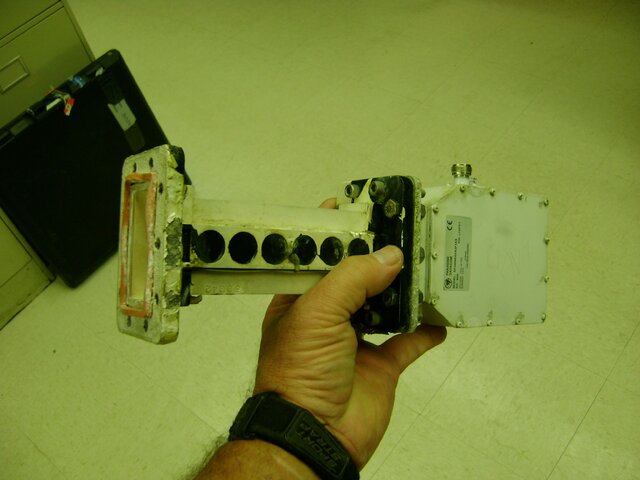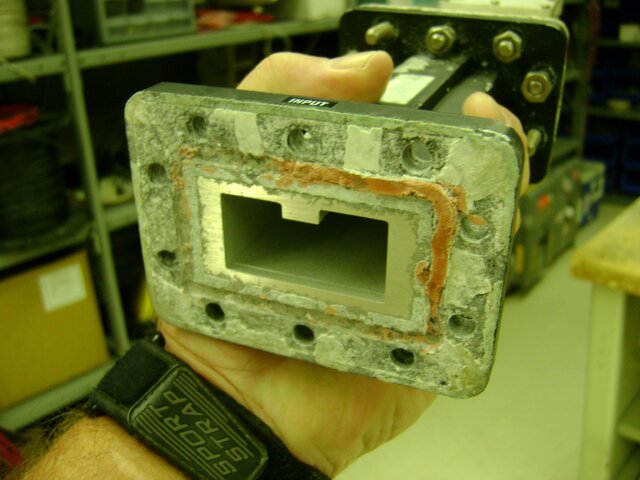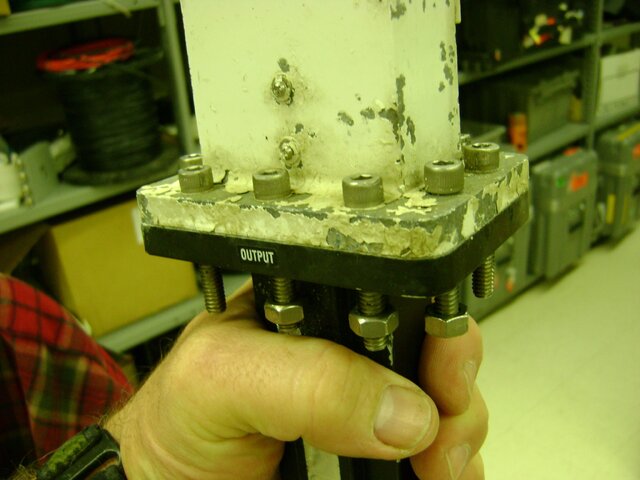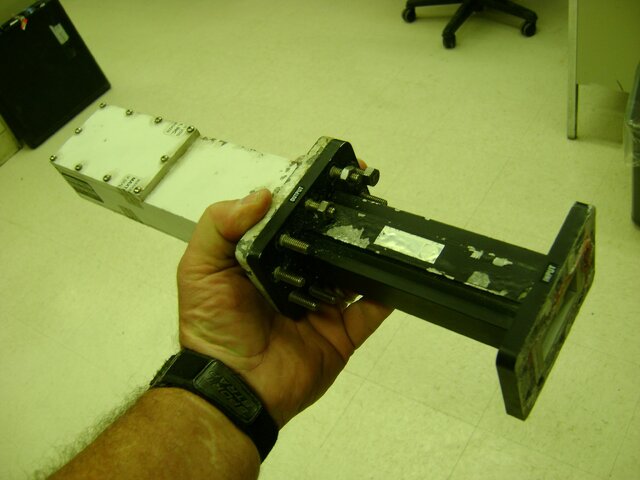We battle constantly to win the war with corrosion in coastal areas of Alaska, especially in the Arctic. Here are a few pics of LNA's that have failed, one got wiped out during the recent solar outage period. The site went down during the outage and never came back, turned out the gain of the LNA dropped by about 20db, it was not the visible corrosion that took it out.
The long tube looking thing you see bolted to the LNA's is a transmit rejection filter, it's job is to keep the 6 GHZ uplink signal out of the LNA as both are bolted to the feedhorn.
The long tube looking thing you see bolted to the LNA's is a transmit rejection filter, it's job is to keep the 6 GHZ uplink signal out of the LNA as both are bolted to the feedhorn.






